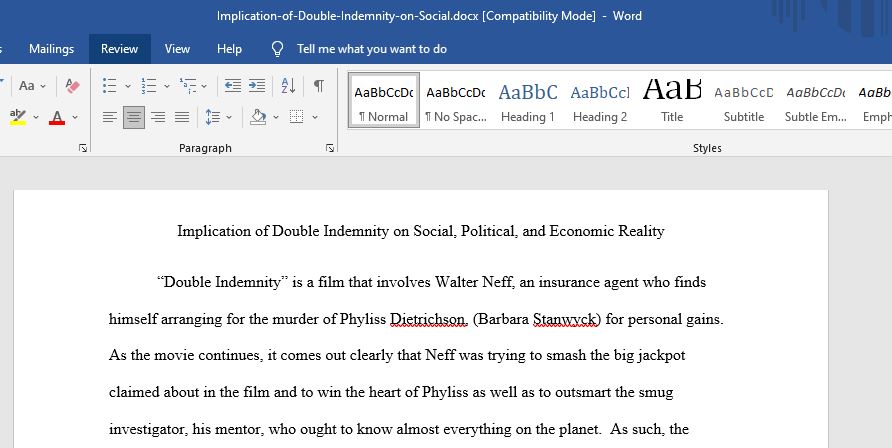Implication of Double Indemnity on Social, Political, and Economic Reality
Focus on: DOUBLE INDEMNITY
Reading a movie script reminds us that the mode of telling that story on screen—the images and sounds—can only be approximated or suggested by the written word. With that caveat, we will look at an excerpt from the screenplay for Billy Wilder’s 1944 crime film, Double Indemnity. It is the climactic scene of the movie where the insurance man, Walter, confronts the treacherous ‘femme fatale’ Phyllis. They have conspired to kill her husband for an insurance payoff, but after that deed was performed, Phyllis has played Walter for a sucker, a fairly typical 1940s crime film plotline.
Earlier in the film, Walter compared acting out a murder to riding on a trolley … that when two people conspire to commit such a crime they need to stay on the trolley and stick by one another (and one another’s stories) to the bitter end. Both characters have gotten off the trolley at this point. Note on the script page included in your text book, how the hard-boiled dialogue maintains the noir, crime-film milieu and yet also manages to pack an emotional punch.
Respond to at least two of the following questions:
- Film narratives often refer directly or indirectly to a contemporary issue. How does DOUBLE INDEMNITY refer to a larger political, social, or economic reality?
- Genre. What elements of story, plot, character, setting and/or emotional effect are associated with Film Noir? How are conventions and expectations fulfilled by the movie? Is the genre narrative used to offer a social commentary?
- Do some research into the biography and filmography of the film’s director. How might his or her biography and filmography inform your reading of the film?
Answer preview:

Word: 400
